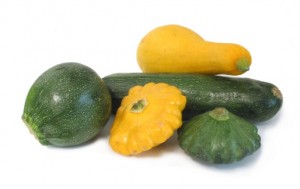Having diabetes doesn’t have to mean eating the same foods day after day. By trying plenty of squash varieties in different meal times, you’ll be able to enjoy and get nourished. Summer squash is one of the tastiest, and a delightful accompaniment to meals anytime of the year.
Get Paleo Cookbook: Paleo Eating for Modern People
 Summer squash is a warm-weather vegetable with many varieties such as zucchini, scallop or yellow. Even though they are called summer squash, they’re still around during winter available in grocery stores all year-round. Summer squash is refreshing and has a delicate flavor, tender skin and creamy white flesh. To gain the full nutritional benefits of this vegetable, the skins or rinds must be eaten. You can add summer squash into a wide variety of salads and dishes.
Summer squash is a warm-weather vegetable with many varieties such as zucchini, scallop or yellow. Even though they are called summer squash, they’re still around during winter available in grocery stores all year-round. Summer squash is refreshing and has a delicate flavor, tender skin and creamy white flesh. To gain the full nutritional benefits of this vegetable, the skins or rinds must be eaten. You can add summer squash into a wide variety of salads and dishes.
Health Benefits
For dieters and health enthusiasts alike, squash is a great addition to a healthy eating program. Any variety of a tasty summer squash is a great help for your healthy diet.
- Summer squash is fat-free and very low in calories – making it a nutritious choice for anyone trying to lose weight
- Summer squash’s rich fiber content can help you get full faster – lose weight or just adopt a healthier eating program
- Summer squash is full of vitamin A antioxidant that helps to protect the eyes from cataracts and other vision problems common in diabetics
- Metabolism of sugar in the body requires ample presence of many B-complex vitamins, and most of these B-complex vitamins are found in valuable amounts in summer squash.
- It also contains vitamin C, which is important for your skin, bones, tendons and ligaments. This vitamin also enhances iron absorption and aids in wound healing.
- It contains high levels of magnesium and potassium. These two are helpful in reducing high blood pressure, one of the many complications of diabetes.
- Summer squash contains a unique polysaccharide composition with an unusually high amount of pectin. Pectin is a water-soluble fiber that has been linked to balancing insulin metabolism and blood sugar regulation.
- It provides a good amount of manganese that synthesizes both cholesterol and fat. Manganese is also necessary for building bones.
Get Paleo Cookbook: Paleo Eating for Modern People
Nutritional Facts
|
Summer squash, all varieties, raw |
|
|
Nutritional value per 100 g (3.5 oz) |
|
|
Energy |
69 kJ (16 kcal) |
|
Carbohydrates |
3.4 g |
|
– Sugars |
2.2 g |
|
– Dietary fiber |
1.1 g |
|
Fat |
0.2 g |
|
Protein |
1.2 g |
|
Water |
95 g |
| Vitamin A equiv. | 10 μg (1%) |
| – beta-carotene | 120 μg (1%) |
| – lutein and zeaxanthin | 2125 μg |
| Thiamine (vit. B1) | 0.048 mg (4%) |
| Riboflavin (vit. B2) | 0.142 mg (12%) |
| Niacin (vit. B3) | 0.487 mg (3%) |
| Pantothenic acid (B5) | 0.155 mg (3%) |
| Vitamin B6 | 0.218 mg (17%) |
| Folate (vit. B9) | 29 μg (7%) |
| Vitamin C | 17 mg (20%) |
| Vitamin K | 3 μg (3%) |
| Iron | 0.35 mg (3%) |
| Magnesium | 17 mg (5%) |
| Manganese | 0.175 mg (8%) |
| Phosphorus | 38 mg (5%) |
| Potassium | 262 mg (6%) |
| Zinc | 0.29 mg (3%) |


I’m glad to have read this post. This is an additional knowledge about exercise and diabetics